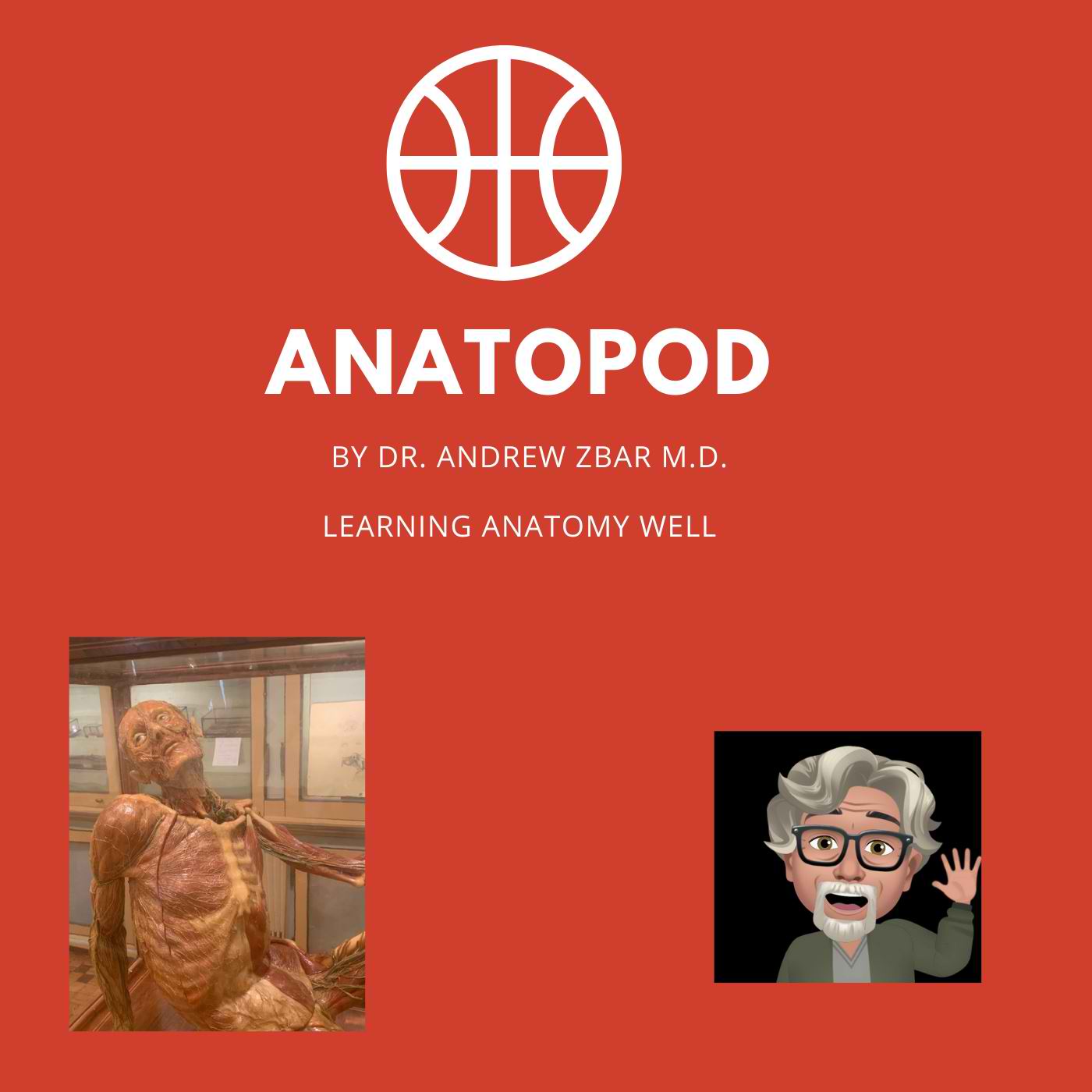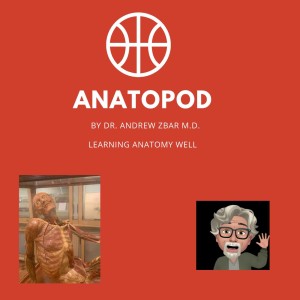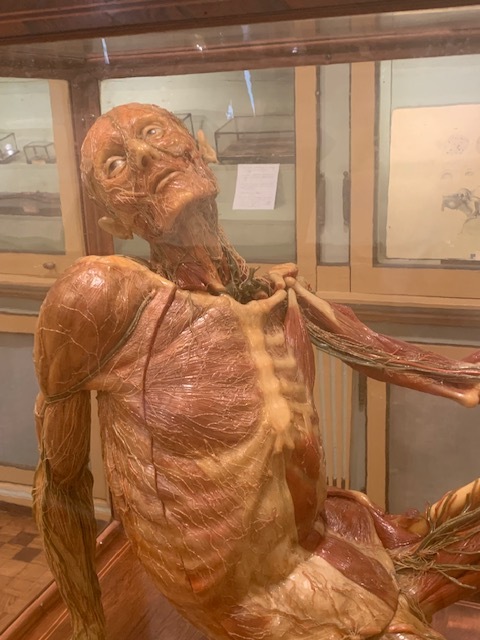
20.2K
Downloads
91
Episodes
Welcome to a new and exciting Podcast called ANATOPOD designed to teach anatomy. ANATOPOD aims not just to teach anatomy well to a high and practical level but also to introduce the history of anatomy and dissection of the cadaver. I appreciate that anatomy is a visual tradition but it wasn't always like that. In the Renaissance, anatomy was taught from textbooks written by the Greek Galen in the first century A.D. Perhaps it might seem unusual to revert anatomy teaching to an aural basis but it is recognized too that in this modern age anatomy departments in universities all over the world are dispensing with their raision d’être, the cadaver, replacing it with surrogates and models. We still do not know the effects of this change on the care of our patients but what we do know is that the cadaver is part of our death culture as much as it touches so many other aspects of society at large.
Episodes

Saturday Aug 14, 2021
The Anatomy of the Pharynx
Saturday Aug 14, 2021
Saturday Aug 14, 2021
This podcast discusses the basic layered structural anatomy of the pharynx revisiting its attachment to the skull base and including the anatomical description of the 3 constrictor muscles (superior, middle and inferior - thyro- and cricopharyngeus) and the internal pharyngeal muscles (the salpingopharyngeus, the stylopharyngeus and the palatopharyngeus).
The vascular, neural and lymphatic anatomy is considered.
The next podcast is on the anatomy of the larynx.

Saturday Aug 07, 2021
Saturday Aug 07, 2021
This is a continuation from Part 1 which placed the Hunters in their aristocratic milieu. In this podcast I discuss the different nature of the Hunterian collections as reflected by the differing personalities of William and John Hunter. The latter part of the podcast discusses the two other dissecting brothers John Bell and his younger brother Sir Charles.

Sunday Aug 01, 2021
AHN 12 - Mouth and Palate
Sunday Aug 01, 2021
Sunday Aug 01, 2021
This podcast discusses the boundaries of the mouth and the musculature of the soft palate (tensor palati, levator palati, musculus uvulae, palatoglossus and palatopharyngeus).
Includes tonsillar anatomy. The anatomy of dentition is discussed.
Includes the anatomy of the tongue (papillae, extrinsic and intrinsic musculature, blood supply, lymphatics and innervation)
Basic assessment of facial embryology as it pertains to cleft lip and palate.
Basic osteology of the mandible and mandibular fracture classifications.

Saturday Jul 17, 2021
Saturday Jul 17, 2021
In this podcast I introduce the Hunter brothers in their social and aristocratic milieu. The beginnings of the Great Windmill Street School of Anatomy and the availability of the Parisian method of dissection is mentioned as is William’s great book The Human Gravid Uterus published in 1774 with spectacular images by Jan van Rymsdyk. John Hunter’s obsession with obtaining the body of the giant Charles O’Byrne is elucidated. Part 2 of this episode discusses the two competing Hunterian museums and the developing rift between these two men as well as the contrasting lives of two other brother anatomists, John and Sir Charles Bell.

Monday Jun 07, 2021
The Kabinets of Curiosity: Drawing the Boundaries of the Museum Space
Monday Jun 07, 2021
Monday Jun 07, 2021
In the same way that one may think of the 16th Century as the century of dissection, so too could the 18th Century be considered the age of the museum. The anatomists along with the apothecaries and the aristocracy were establishing their mobile collections that would devolve from the Schätzkammern (the Chambers of Power) into individual anatomical collections of curiosities. These Wunderkammern (Chambers of Wonder) and Kunstschranks (Art Cupboards) included the full range of congenital malformations and foetal monstrosities on open display and were the world famous private collections of the great embalmers like Ruysch and Honoré Fragonard (1732-1799). It was these that influenced the directors of the British Museum and London’s Natural History Museum to consciously decide not to exhibit deformities but rather to use the museum space as a narrative for the new Darwinian story of evolution.
This podcast discusses the ethos of these dioramas, Ruysch imbued with an ascetic religious determination to use anatomy as a sanitized tableau that glorified God. Fragonard on the other hand displayed in his hide-tanned écorchés the shocking brutality of cadaveric dissection. Perhaps none were more beautiful, however, than the wax models of dissected corpses particularly those made by Clemente Susini (1752-1814) in Florence and which have made their way to Cagliari, Pavia and Vienna. Susini came from a long line of wax modelers whose rivalry made the name of Bologna and Florence. Bologna was advanced by the husband and wife team of Giovanni Manzolini (1700-1755) and Anna Morandi Manzolini (1714-1774) and had the unique backing of Bologna’s Bishop Prospero Lambertini (1675-1758) who later as Pope Benedict XIV advanced the cause of anatomy with the complete backing of Papal authority.
As the explorers brought back the skulls and skeletons of the New World, anatomy perverted its craniometric measurements to advance a misguided theory of racial difference and development that promoted a Caucasian ideal. The collections of these bones from the desecration of tribal graves and burial grounds are still the subject of dispute over repatriation and return. For many, behind all the intellectual discussion there was an underlying desire to separate those noble savages whom the anatomists deemed sufficiently human that they might be converted to the Catholic faith from those subhumans destined for enslavement.
Intro and Outro music is Dvorak A. The ‘American’ String Quartet No. 12 in F Major (Opus 96).

Sunday Jun 06, 2021
AHN11: THE NOSE AND PARANASAL SINUSES
Sunday Jun 06, 2021
Sunday Jun 06, 2021
Consideration of the osteology of the nose (a recap of a prior podcast) with discussion of the conchae, the nasal septum and the quadrantic approach towards the blood and nerve supply of the lateral nose and the septum (Kiesselbach’s plexus/Little’s area),
The blood and nerve supply and the lymphatic drainage of the paranasal sinuses are discussed.

Sunday May 16, 2021
THE ANATOMY OF THE ORBIT
Sunday May 16, 2021
Sunday May 16, 2021
In this podcast I assess the bony orbit and its components as well as the eyelids and the nasolacrimal apparatus. Next, aspects of eye stability and then the structure of the eye and the retina. The anatomy of the extraocular muscles and their specific movements are considered as is the explanation of individual ocular palsies based on that anatomical information. There is a summary of the nerves and vessels of the orbit. For revision purposes, this podcast should be studied in association with AHN 4 : the Autonomic Nervous System of the Head and Neck.

Wednesday Apr 28, 2021
Dissection as Diorama: Frederik Ruysch and the Preservation of a Secret
Wednesday Apr 28, 2021
Wednesday Apr 28, 2021
In this podcast the embalming skills of Frederik Ruysch (1638-1731) are showcased. In an age where dissection was still an ephemeral event those like Ruysch and his contemporary rivals Jan von Swammerdam (1637-1680) and Louis de Bils (1624-1670) were highly prized. Ruysch went on to lead the Amsterdamer anatomy school and botany department for the next 65 years and was so renowned that when Sir Isaac Newton (1642-1727) died, Rusych took his place at the French Académie des Sciences.
Ruysch was a great dissector but he became equally famous for his little morality play dioramas that were made from the detritus remains of stillborn babies. Each would intone the observer to revere God and to remember the pettiness of possessions and the fleeting nature of existence. His collection known as his Wunderkammer (Chamber of Wonders) might have rivalled nearby freak shows but was sold to Tsar Peter the Great (1672-1725) in its entirety with the Russian leader displaying the specimens in the Kunstkamera on Vasilyevsky Island in St. Petersburg where it can be found today.

Saturday Apr 17, 2021
VEINS OF THE HEAD AND NECK: CSF DYNAMICS AND THE VENOUS SINUSES AND EMISSARY VEINS
Saturday Apr 17, 2021
Saturday Apr 17, 2021
There is discussion of the superficial and deep cerebral venous systems, one draining the cerebral hemispheres and the other more constant draining the basal ganglia and thalamus. The formation and tributaries of the internal jugular vein is discussed. Then the basic anatomy of the dural venous sinuses including details of the superior and inferior sagittal, transverse, straight, tentorial, sigmoid, occipital, basilar, superior and inferior petrosal sinuses as well as separate considerations of the design of the cerebral venous drainage.
The input and output channels of the cavernous sinus is included.
The vertebral venous plexi, emissary veins and the CSF dynamics and anatomy of drainage are considered.

Saturday Apr 03, 2021
Saturday Apr 03, 2021
This podcast takes off after the first part (discussing the economic and political conditions of the Dutch provinces in the 17th Century) and considers the Anatomy Lesson paintings that are curated in Amsterdam. Two evocative portraits The Anatomy Lesson of Dr. Nicolaes Tulp and The Anatomy Lesson of Dr. Jan Deijman executed by Rembrandt are examined on the background of his bankruptcy and the death of his beloved wife Saskia at the tender age of 30 from Tuberculosis. These paintings continued to be produced despite the charges against the Amsterdam Guild of Surgeons of corruption which resulted in its eventual disbandment.
